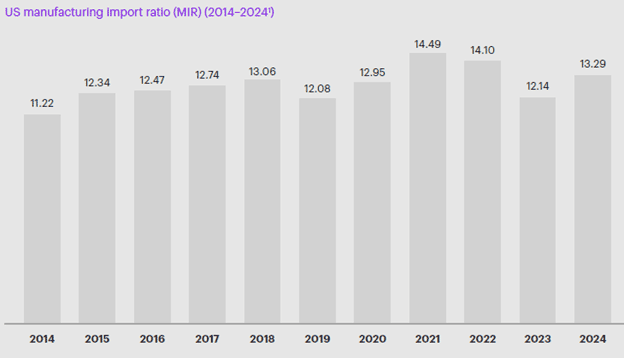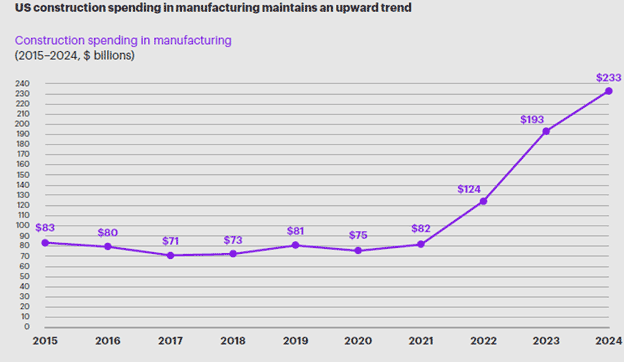What is the state of reshoring as we head into the last quarter of 2025?
It’s a topic we’ve certainly covered over many years, and I say there are a few consistent themes across that coverage.
One relates to a comment I heard from a woman who was at the time was head of supply chain for JCPenney, circa 2008. Her comment was at a conference upon hearing some bullish opinions on companies moving production back to the US and went something like this: “When companies left the US for China and elsewhere it was like a tsunami, while reshoring is coming in back in dribs and drabs.”
Gilmore Says.... |
 |
| That should translate to increases in manufacturing output as some point, though I will note much as that investment came as a result government funding and mandates to source in the US. |
 |
What do you say? |
|
| Click here to send us your comments |
| |
|
|
|
That is that despite survey after survey over many years now finding that CEOs intend to bring a significant amount of production back to the US, it never shows up in the numbers, such as US manufacturing output and trade deficits.
What we got instead for many years were the same few anecdotes cited again and again (e.g., GE Appliance) with no support from the data of a trend.
For 12 years the consultants at Kearney have produced something called the Kearney Reshoring Index, which was just released for 2025 based on 2024 data.
That includes some data more bullish on the state of reshoring than other data, but also something called the Manufacturing Import Ratio, or MIR, which is less so.
What’s that, you ask?
Kearney defines it as the exports of manufactured goods to the US across 14 low-cost Asian countries measured as a percent US domestic manufacturing output. In other words, the measure tracks whether the share of imports is growing or not versus all goods made in the US. A falling MIT would seem to indicate a growth in reshoring, while a rising number would suggest the opposite.
As can be seen in the graphic below from the Kearney report, the MIR grew slowly but mostly steadily from 2014 to 2022, indicating not much progress in bringing manufacturing back home. But then there was a was a reasonably sharp drop in 2023.

Source: Kearney
Did that indicate a turn in reshoring’s fortunes? Apparently not, as the index jumped back up in 2024.
Said Kearny on that change: “Was 2024 just a temporary setback for the Reshoring Index? Can companies that have already invested in building a more sustainable and competitive manufacturing base that stands toe-to-toe with global production hubs still expect to reap the benefits of their efforts? Or will the idea of manufactured goods “Made in America” end up a day late and a dollar short a new global trade patterns emerge?”
There are some bullish signs. One is the recent jump in spending on new factory construction in the US, as shown in the graphic below from the report, which as can be seen rose from just $81 billion pre-pandemic in 2019 to $233 billion in 2024.

Source: Kearney
That should translate to increases in manufacturing output as some point, though I will note much as that investment came as a result government funding and mandates to source in the US.
The Kearney report ends on a bullish reshoring note, saying that “The share of CEOs planning to reshore part of their supply chains within the next three years rose by 15% compared to last year’s report.”
Maybe so, but we’ve heard it all before, and another three years comes and goes, and the numbers don’t budge or worse trend in the wrong direction.
Perhaps not this time. But I don’t think tariffs will do the job.
What is your take on reshoring? Let us know your thoughts at the Feedback button below.
Your Comments/Feedback
|